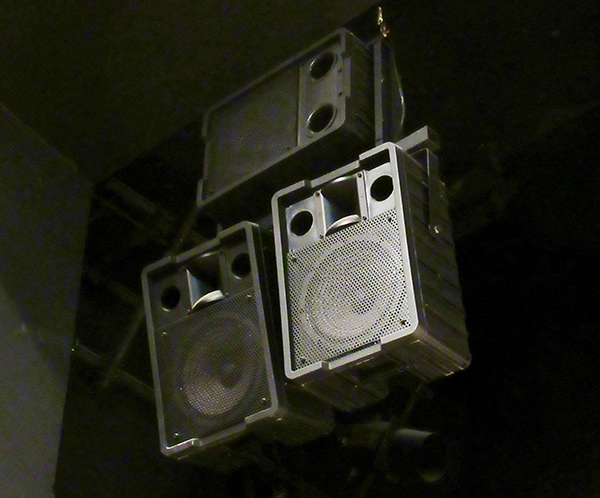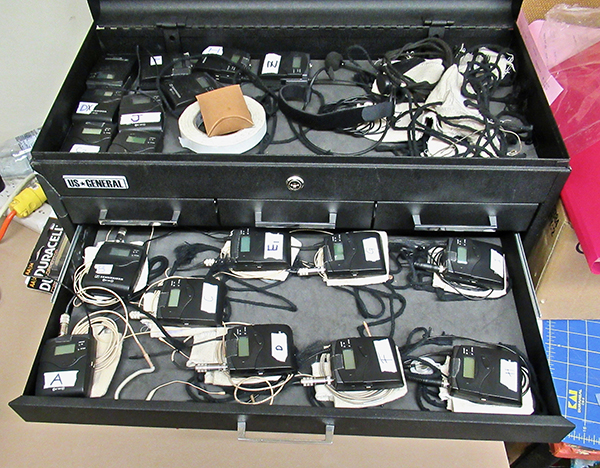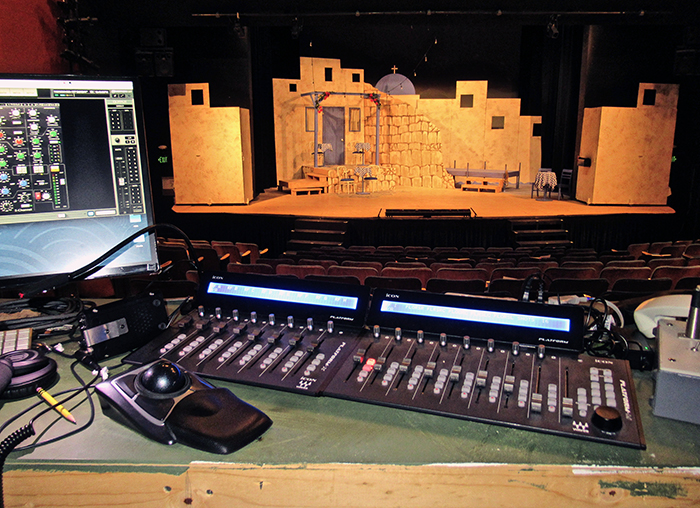Previously (here), I explored the challenges we face at City College of San Francisco (CCSF) when it comes to sound design with tight budget restrictions, and now I’ll go back in time to my start with the program and also discuss our venue’s system and provide additional observations.
In the early years, on some shows, I had to run sound myself because there wasn’t enough stage crew available during the run of the show due to classes being cut because of low enrollment and/or budget cuts. It was a real disappointment because I’ve always felt that it is important for the students to run the shows so that they can learn the craft, and it also meant a further time commitment on my part, but it had to be done. The bottom line is that there are always looming “budget cuts” hanging over everything we do.
As with any industry; the relationships that you build with people are very important. After graduating from high school, I began working with several profit and non-profit theatres in the San Francisco Bay Area. As both an assistant sound designer and the lead, it provided the opportunity to work with a wide range of people.
As an assistant, I was often charged with ordering supplies, equipment and handle rentals, and through this process I learned how to engage with people and negotiate deals, becoming savvy to the ways of retail pro audio market. At one point I even took a job at a musical instrument retailer in the pro audio department. Just as in the days of the wild west, I became a “horse trader,” negotiating deals and selling folks what they needed.
I also continued building relationships with a variety of industry professionals, and when there was the need to purchase equipment or supplies, I would always negotiate regardless of whether the particular retailer did that sort of thing or not.
If the vendor didn’t want to work with me, my counter would be to note that I’d take my purchase order somewhere else; usually, they didn’t want to lose the cash flow so they’d agree to the lower price. It’s important to know what equipment is going for on the “street” and not just the price that is published and/or advertised or on the internet. (The only issue with this tactic is that one must be prepared to actually leave and do business elsewhere.)
The relationships built with a few select vendors have proven to really help when it comes to slim budgets. They offer me exclusive deals before going public and inform me of manufacturer deals and closeouts. Sometimes they defer payment, provide demo loans, and even hold gear for me in layaway until the next budget cycle. In turn, I send them customers – fellow sound designers, musicians, theatre companies, etc.
The Wayback Machine
The last major renovation of the sound equipment at the Diego Rivera Theatre at CCSF was way back in 1995. Suffice to say that all of the wireless equipment from that era no longer operates in the legal radio frequency spectrum.
The “new” sound system at that time was headed by a Mackie 16×2 analog mixer that was an upgrade from the previous TEAC 5-channel recording-style mixer dating back to the 1970s. The main loudspeakers, previously some custom-built (“home brew”) models, were replaced with four RAMSA 12-inch point-and-shoot boxes, joined by two subwoofers, flown stage left and right. They’re driven by RAMSA power amplifiers, with equalization via a programable Micro Audio EQ that has since been replaced with a dbx DriveRack that adds compression capability as well.

There were some existing Electro-Voice vintage 635 omnidirectional mics and a few Shure SM58s, with more added (along with SM57s and some Sennheiser shotgun mics) in the renovation. Also joining the kit were six Telex wireless mic systems (with lavaliers) and a wireless intercom system with four beltpacks and headsets.
A new Whirlwind 24 x 8 copper snake added terminating capability at the stage, and it ran to a new mix position in the back of the house. Moving the mix position was the most useful update in the process – previously it had been located on a small balcony. This gave the sound operators a much better perspective to mix from, a real audience perspective.
When I took over as sound designer in 2000, I decided to address some of the system’s deficiencies, bringing in my own Sennheiser e100 Series wireless systems and a Mackie 24x4x2 mixer. When the Countrymen E6 headworn microphone was introduced, I added several to my personal inventory and they proved to be a tremendous upgrade.

Several years later, shortly after the Behringer X32 digital mixer hit the market, I was able to obtain a unit and started using it for all productions. The X32 significantly improved sonic quality, to the point where the music department chair noticed the upgrade – pretty quickly, she found the budget to obtain a unit for our department.
Over the course of time, we’ve also been able to add four Sennheiser e100 systems as well as wired Clearcom beltpacks and headsets. However, with the exception of the X32, years later the equipment from the 1995 renovation (and what I bring from my own inventory) is still in use today.















